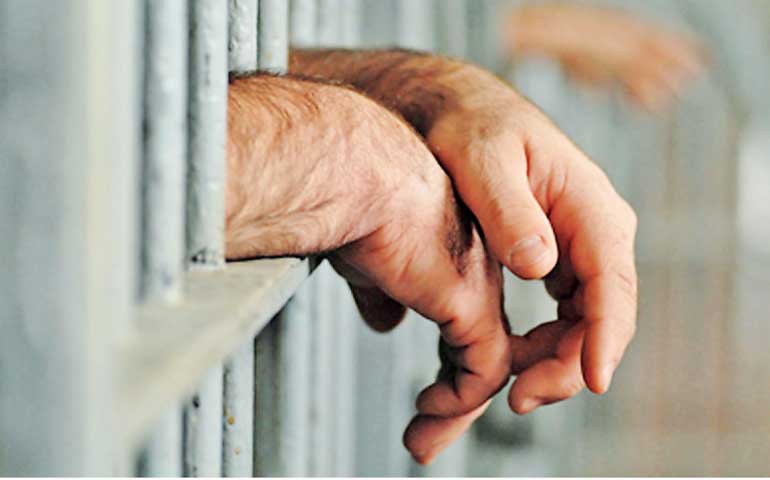Saturday Jan 10, 2026
Saturday Jan 10, 2026
Saturday, 26 June 2021 00:05 - - {{hitsCtrl.values.hits}}

International Day in Support of Victims of Torture is today
“So, it seems to me that despite so many decisions, torture at police stations continues unabated, in utter contempt of fundamental rights guaranteed by the Constitution’ 1”: Justice Kulatunga
 During the period March 2020 to 24 June 2021 there were reports of six cases of encounter killings, 27 cases of police violence, eight deaths in police custody, four deaths in prison, one case of torture in prison and two instances of prison riots precipitated by fears about the spread of COVID-19, that led to the death of two persons in the first riot and 11 in the second riot. Around 117 persons were injured in the second riot. Eleven incidents of violence by members of the armed forces, one of which resulted in death, and six incidents of violence by other state officials were also reported.
During the period March 2020 to 24 June 2021 there were reports of six cases of encounter killings, 27 cases of police violence, eight deaths in police custody, four deaths in prison, one case of torture in prison and two instances of prison riots precipitated by fears about the spread of COVID-19, that led to the death of two persons in the first riot and 11 in the second riot. Around 117 persons were injured in the second riot. Eleven incidents of violence by members of the armed forces, one of which resulted in death, and six incidents of violence by other state officials were also reported.
These cases demonstrate that torture is systemic in Sri Lanka and is embedded within institutional structures. The Supreme Court has found that torture is systemic. The Human Rights Commission of Sri Lanka has stated torture is systemic. It is time the public too, realises that torture is systemic.
In 1995 the Supreme Court of Sri Lanka in its decision in Abasin Banda v. S.I. Gunaratne & Others stated that ‘infringements of fundamental rights by the police continue unabated even after nearly 18 years from the promulgation of the 1978 Constitution and despite the numerous decisions of this Court which have condemned such infringements’. The Court further said that ‘this situation exists because police officers continue to enjoy immunity from appropriate departmental sanctions on account of such conduct. It is hoped that the authorities will take remedial action to end this situation…’.
Yet, 26 years later, the failure of the authorities to take remedial action is illustrated by the May 2021 Supreme Court decision in the fundamental rights petition filed by the mother of 17-year-old Sandun Malinga who died in custody in 2014 as a result of torture. In this case, the Supreme Court not only found Sandun died as a result of police torture but also that various systemic checks, such as the Judicial Medical Officer, had not performed their duties.
Violence is the system
Punishment bureaucracy is a term coined by civil rights attorney Alec Karakatsanis, to describe the interlocking systems of laws and institutions, which are supposedly neutral and objective but in practice are not, that are bestowed the power to define what constitutes a crime, who is deemed a criminal and decide on punishment. The punishment bureaucracy claims that increasingly punitive laws, especially on issues that cause public fear and insecurity, such as national security and drug control, will make the country safer.
We assume the law is neutral. But the law is also a system of power, which excludes and includes persons. Laws can discriminate against certain groups, either directly or indirectly. Laws that claim to protect the state and citizens, such as national security laws and drug control laws, create a deviant who is portrayed as a threat to society. The ‘deviant’ person is then dehumanised and demonised to justify any violation to which the person is subjected. This in turn creates space for torture. The Prevention of Terrorism Act is a perfect example of this.
Within the punishment bureaucracy, factors such as ethnicity, religion, sexuality, economic status and class can make people more vulnerable to being subjected to torture. An example of this is Vijitha Yogalingam, a 27-year-old Tamil woman, who was vulnerable because of her ethnicity and the fact that she was economically disadvantaged and hiding from a man who was threatening her with violence, and used state structures to extract revenge.
Vijitha was abducted on 21 June 2000, kept in a garage for a few hours, accused of being an LTTE cadre by the police and beaten with a club on the chest, knees, abdomen and back. During her detention on a Detention Order issued under the Emergency Regulations, she was subject to continuous and severe torture and was threatened with rape with an object when she refused to sign a confession. The rape was carried out for 15 minutes until she lost consciousness.
The Supreme Court of Sri Lanka found that the methods used by the police ‘can only be described as barbaric, savage and inhuman’, on which basis it decided that Vijitha’s fundamental right not to be subjected to torture or to cruel, inhuman or degrading treatment or punishment was violated. Although the Supreme Court directed the Attorney-General to take action against those responsible under the Convention Against Torture Act, it is was reportedly not done because Vijitha left the country after her ordeal.
The violence a person experiences during arrest and in police custody continues when the person is imprisoned. The Human Rights Commission of Sri Lanka’s national study of prisons documented the every-day nature of violence in prisons where it is used as a ritual of humiliation and degradation, and to subjugate and control persons. The recent allegation of torture in prison by social activist Asela Sampath is a case in point.
Hence, in practice, the punishment bureaucracy discriminates, is violent and cruel and functions on a masculine, hierarchical, militarised, control-based ethos. Leaders, particularly authoritarian leaders, use the punishment bureaucracy as a tool not only to portray themselves as strong leaders, but also to stifle dissent.
Violence is hence in the DNA of the punishment bureaucracy.
Who is ‘good’ and who is ‘bad’ in the punishment bureaucracy?
Public and civil society response to state violence is to call for ‘reform’ of the police, prisons or the justice sector. The reform often includes measures aimed at depoliticising the said institutions and strengthening institutional disciplinary measures. But is that enough?
The calls for legal and institutional reforms are based on the philosophy that ‘more rules will mean less violence’2. Such reform initiatives also garner support from multilateral and bilateral donors who fund innumerable training and awareness programs, which have been ongoing for decades.
These initiatives often include training in new investigative techniques and the introduction of technology, such as body cameras and CCTV cameras in police inquiry rooms and in prisons. Instead of tackling the fundamental cause of state violence such initiatives are funded with the expectation that technology, new laws, harsher penalties or more training will change behaviour in a system that is inherently discriminatory and violent.
The impact of the 30-year war on the way in which Sri Lankans perceive and deal with violence has also shaped the punishment bureaucracy. The war is one of the reasons Sri Lankans have become numb to violence. When confronted with constant acts of violence and brutality, people tend to ignore them, or become desensitised to cope and continue with their daily lives. This leads to violence becoming a normal part of life. The armed conflict also led to the militarisation of the police, which, rather than functioning as an institution tasked solely with keeping the peace, began performing counter-insurgency tasks. The militarisation of policing further entrenched the normalisation of the use of violence as part of performing their duties. The use of force thereby became the first resort rather than last resort.
Calling for tougher laws and more punitive measures, is a rather simplistic approach which ignores the complex, socio-economic and political eco-systems that cause and enable these acts of violence. The hyper-punitive approach attracts public support because a belief is created that the implementation of the law and the criminal justice system are neutral, and punishment is reserved only for ‘bad, anti-social people’ who deserve it. Based on this, the public mistakenly believe the violence of the punishment bureaucracy will not reach them because they are not ‘bad’, and hence are protected from it.
Contrary to the façade of objectivity, in the punishment bureaucracy the definitions of who is ‘good’ or ‘bad’ are at the discretion of persons who wield power, and exercise it arbitrarily, subject to their prejudices and biases. Was Balawarnam Sivakumar, a man with mental health problems, who in 2009 was chased by the police into the ocean, and was beaten and prevented from coming ashore until he drowned ‘bad’?
Does a violent system make us safer?
Our vision of what is possible must move beyond the parameters of what already exists. We must move beyond mere reform and re-imagine the legal, socio-political and economic changes that are required to make our communities safer. These changes must address structural and systemic socio-economic inequalities, instead of, yet again, investing only in cosmetic changes that do not address root causes. Structural violence which is ‘invisible’ and is often ignored, has to be addressed because it is embedded within institutional structures and disempowers individuals and robs them of their life chances.
More importantly, we must invest in social protection mechanisms to address the drivers of crime, such as by increasing employment opportunities, preventing homelessness, directing persons away from prison to alternatives to incarceration for non-violent offences, and crafting community responses to certain non-violent offences and decriminalising them.
Measures that promise safety only through criminalisation, particularly of marginalised people, incarceration and threat of violence make all of us more insecure. .
Footnotes
1 Ratnapala v Dharmasiri and others, (1993) 1 SLR 225.
2 Mariame Kaba, ‘Yes, We Mean Literally Abolish the Police’, The New York Times, 13 June 2020, at https://www.nytimes.com/2020/06/12/opinion/sunday/floyd-abolish-defund-police.html